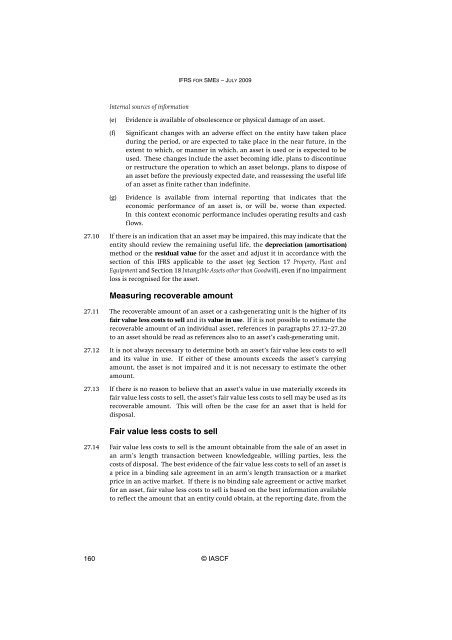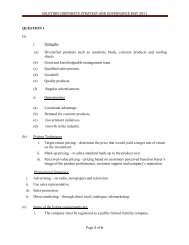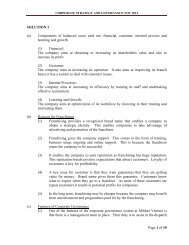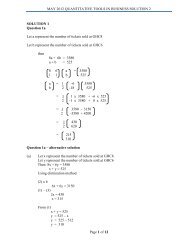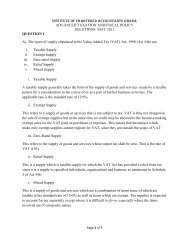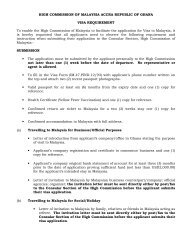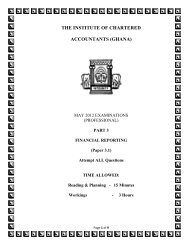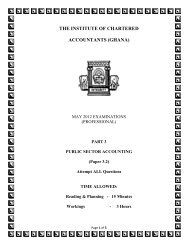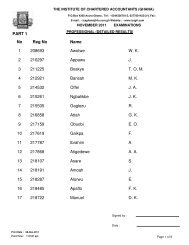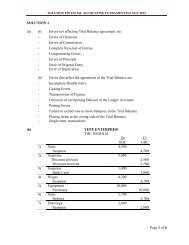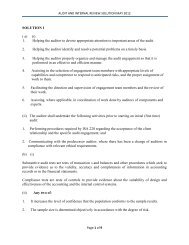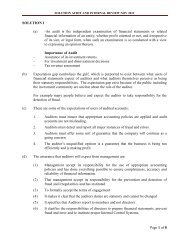(IFRS) for Small and Medium-sized Entities (SMEs)
(IFRS) for Small and Medium-sized Entities (SMEs)
(IFRS) for Small and Medium-sized Entities (SMEs)
Create successful ePaper yourself
Turn your PDF publications into a flip-book with our unique Google optimized e-Paper software.
<strong>IFRS</strong> FOR SMES – JULY 2009Internal sources of in<strong>for</strong>mation(e)(f)(g)Evidence is available of obsolescence or physical damage of an asset.Significant changes with an adverse effect on the entity have taken placeduring the period, or are expected to take place in the near future, in theextent to which, or manner in which, an asset is used or is expected to beused. These changes include the asset becoming idle, plans to discontinueor restructure the operation to which an asset belongs, plans to dispose ofan asset be<strong>for</strong>e the previously expected date, <strong>and</strong> reassessing the useful lifeof an asset as finite rather than indefinite.Evidence is available from internal reporting that indicates that theeconomic per<strong>for</strong>mance of an asset is, or will be, worse than expected.In this context economic per<strong>for</strong>mance includes operating results <strong>and</strong> cashflows.27.10 If there is an indication that an asset may be impaired, this may indicate that theentity should review the remaining useful life, the depreciation (amortisation)method or the residual value <strong>for</strong> the asset <strong>and</strong> adjust it in accordance with thesection of this <strong>IFRS</strong> applicable to the asset (eg Section 17 Property, Plant <strong>and</strong>Equipment <strong>and</strong> Section 18 Intangible Assets other than Goodwill), even if no impairmentloss is recognised <strong>for</strong> the asset.Measuring recoverable amount27.11 The recoverable amount of an asset or a cash-generating unit is the higher of itsfair value less costs to sell <strong>and</strong> its value in use. If it is not possible to estimate therecoverable amount of an individual asset, references in paragraphs 27.12–27.20to an asset should be read as references also to an asset’s cash-generating unit.27.12 It is not always necessary to determine both an asset’s fair value less costs to sell<strong>and</strong> its value in use. If either of these amounts exceeds the asset’s carryingamount, the asset is not impaired <strong>and</strong> it is not necessary to estimate the otheramount.27.13 If there is no reason to believe that an asset’s value in use materially exceeds itsfair value less costs to sell, the asset’s fair value less costs to sell may be used as itsrecoverable amount. This will often be the case <strong>for</strong> an asset that is held <strong>for</strong>disposal.Fair value less costs to sell27.14 Fair value less costs to sell is the amount obtainable from the sale of an asset inan arm’s length transaction between knowledgeable, willing parties, less thecosts of disposal. The best evidence of the fair value less costs to sell of an asset isa price in a binding sale agreement in an arm’s length transaction or a marketprice in an active market. If there is no binding sale agreement or active market<strong>for</strong> an asset, fair value less costs to sell is based on the best in<strong>for</strong>mation availableto reflect the amount that an entity could obtain, at the reporting date, from the160 © IASCF


